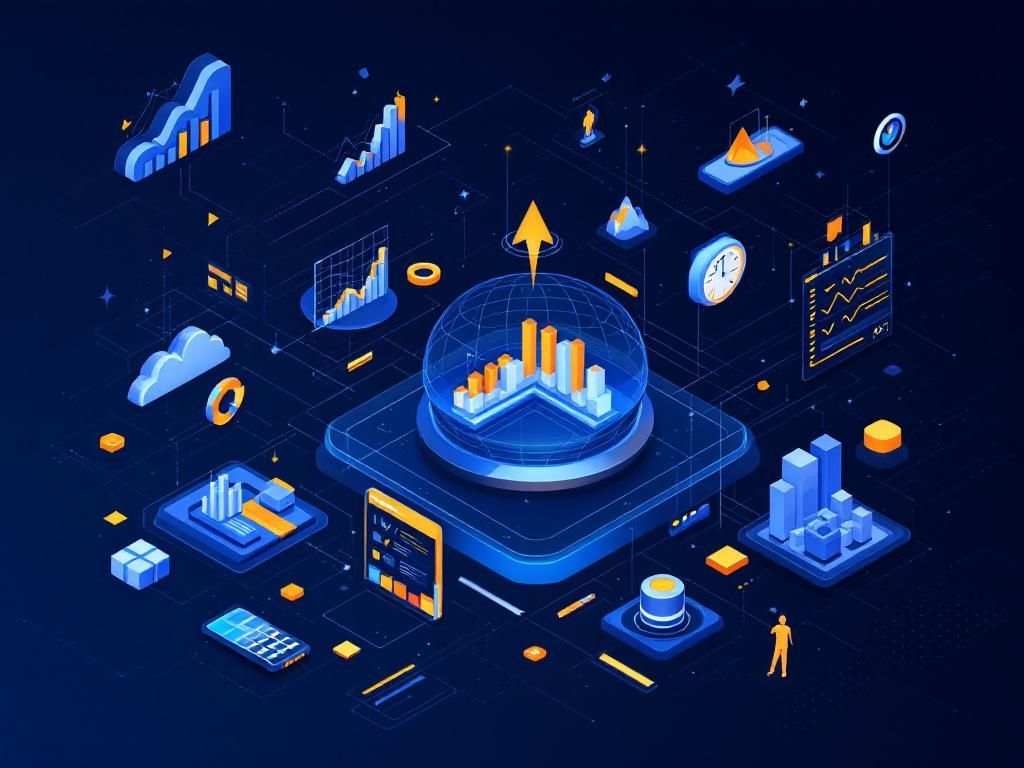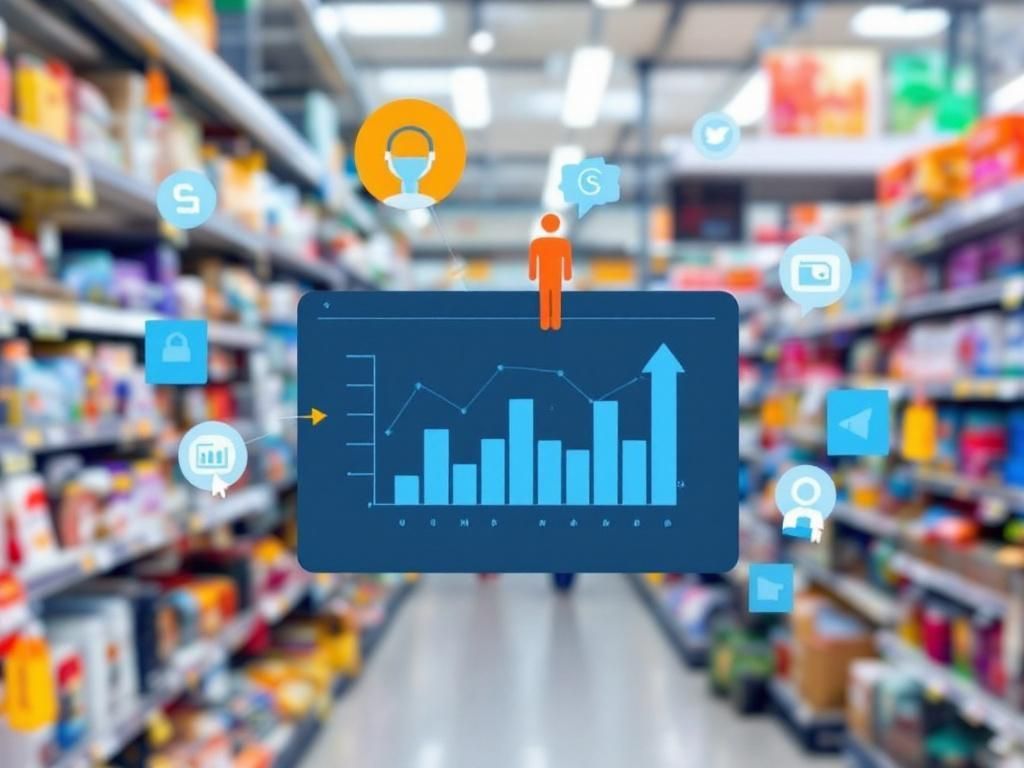As the retail landscape rapidly evolves, the need for advanced analytical tools has never been more crucial. Predictive analytics platforms provide retailers with the power to harness data effectively, enabling them to forecast trends, optimize inventory, and enhance customer experiences. This article explores the leading predictive analytics platforms that are set to dominate the retail sector in 2025, providing insight into their features, benefits, and how they can be leveraged for success.
Understanding Predictive Analytics in Retail
Predictive analytics involves the use of statistical algorithms and machine learning techniques to identify the likelihood of future outcomes based on historical data. In the retail sector, this can manifest in various forms, including:
- Demand forecasting
- Customer segmentation
- Inventory optimization
- Marketing campaign effectiveness
- Churn prediction
By utilizing these insights, retailers can make informed decisions that directly impact their bottom line.
Key Features of Leading Predictive Analytics Platforms
When evaluating predictive analytics platforms, certain features are essential for maximizing their potential in retail settings. Below are some key functionalities to look for:
Data Integration
The ability to integrate data from various sources—like point-of-sale systems, e-commerce platforms, and social media—is foundational. This holistic view allows for more accurate predictions.
Machine Learning Capabilities
Robust machine learning algorithms enhance predictive accuracy by continuously learning from new data. Look for platforms that offer automated machine learning (AutoML) features, allowing non-technical users to build predictive models.
User-Friendly Interface
A straightforward, intuitive interface enables users across different departments, from marketing to finance, to leverage analytics without needing advanced technical skills.
Real-Time Analytics
In a fast-paced retail environment, access to real-time data is critical. Real-time analytics empower retailers to make prompt decisions that can affect sales and inventory management.
Top Predictive Analytics Platforms for Retail in 2025
Here’s a rundown of some of the top predictive analytics platforms tailored for the retail industry:
1. SAS Predictive Analytics
Renowned for its powerful analytics capabilities, SAS provides end-to-end solutions for data management and predictive modeling.
- Strengths: Extensive data integration options and advanced analytics capabilities.
- Use Cases: Demand forecasting, customer analytics.
2. IBM Watson Analytics
This platform leverages AI to provide deep insights and predictive analytics. Its natural language processing feature allows users to ask questions in plain English.
- Strengths: AI-driven insights, user-friendly interface.
- Use Cases: Customer segmentation, marketing effectiveness.
3. Microsoft Azure Machine Learning
Microsoft’s cloud-based solution offers robust machine learning capabilities combined with scalability. Perfect for enterprises already utilizing Azure.
- Strengths: Integration with Microsoft products, scalability.
- Use Cases: Inventory management, sales forecasting.
4. Google Cloud AI
With its powerful machine learning tools and integration with BigQuery, Google Cloud AI provides a strong platform for predictive analytics.
- Strengths: Advanced machine learning models, integration with vast Google services.
- Use Cases: Customer behavior analysis, supply chain optimization.
5. SAP Analytics Cloud
This all-in-one analytics solution combines business intelligence, planning, and predictive analytics in one platform.
- Strengths: Real-time data processing, predictive planning.
- Use Cases: Financial forecasting, performance management.
Utilizing Predictive Analytics to Drive Revenue
Implementing predictive analytics can significantly enhance revenue generation strategies in retail. Here are some methods:
Optimizing Pricing Strategies
By analyzing consumer behavior and market trends, retailers can adjust their pricing strategies dynamically to maximize profits. This could include:
- Dynamic pricing based on demand fluctuations.
- Discount optimization based on historical sales data.
Enhancing Customer Experience
Personalized marketing campaigns driven by predictive analytics can lead to improved customer engagement and loyalty. Retailers can:
- Identify high-value customers for targeted promotions.
- Customize the shopping experience based on browsing and purchase history.
Streamlining Inventory Management
By predicting demand more accurately, retailers can maintain optimal inventory levels, reducing both overstock and stockouts. Strategies include:
| Strategy | Description |
|---|---|
| Just-in-Time Inventory | Minimizes storage costs by receiving goods only as needed. |
| Automated Reordering | Sets thresholds for inventory levels that trigger automatic replenishment orders. |
The Future of Predictive Analytics in Retail
The retail sector will continue to evolve, with predictive analytics playing a pivotal role. The following trends may shape the future landscape:
Increased Use of AI and Machine Learning
As AI and machine learning technologies advance, their integration into predictive analytics will lead to even more refined insights, allowing retailers to anticipate market shifts more effectively.
Greater Emphasis on Data Privacy
With increasing regulatory scrutiny around data privacy, platforms will need to ensure compliance while still providing powerful analytics capabilities.
Expansion of Real-Time Analytics
As technology improves, the ability to leverage real-time analytics will likely become standard practice, enabling retailers to respond instantly to consumer behavior changes.
Conclusion
As we move towards 2025, predictive analytics will be at the forefront of retail innovation. By implementing these advanced platforms, retailers can unlock new opportunities for growth and enhance their operational efficiency. Embracing the power of predictive analytics will not only provide a competitive edge but also foster a deeper connection with consumers, ultimately driving long-term success in the dynamic retail landscape.
FAQ
What are the top predictive analytics platforms for retail in 2025?
In 2025, some of the top predictive analytics platforms for retail include IBM Watson, Microsoft Azure Machine Learning, Google Cloud AI, SAS Analytics, and SAP Analytics Cloud.
How can predictive analytics benefit retail businesses?
Predictive analytics can help retail businesses optimize inventory management, enhance customer experience, forecast sales trends, and improve marketing strategies by analyzing customer data and purchasing behaviors.
What features should I look for in a predictive analytics platform for retail?
Key features to look for include user-friendly dashboards, real-time data processing, integration capabilities with existing systems, advanced machine learning algorithms, and robust data visualization tools.
Are there any challenges in implementing predictive analytics in retail?
Yes, challenges may include data quality issues, resistance to change within the organization, the need for skilled personnel, and the complexity of integrating new technologies with legacy systems.
How do predictive analytics platforms ensure data security for retail businesses?
Most predictive analytics platforms implement strong encryption, access controls, and compliance with data protection regulations to ensure that sensitive retail data is secure and protected from breaches.




